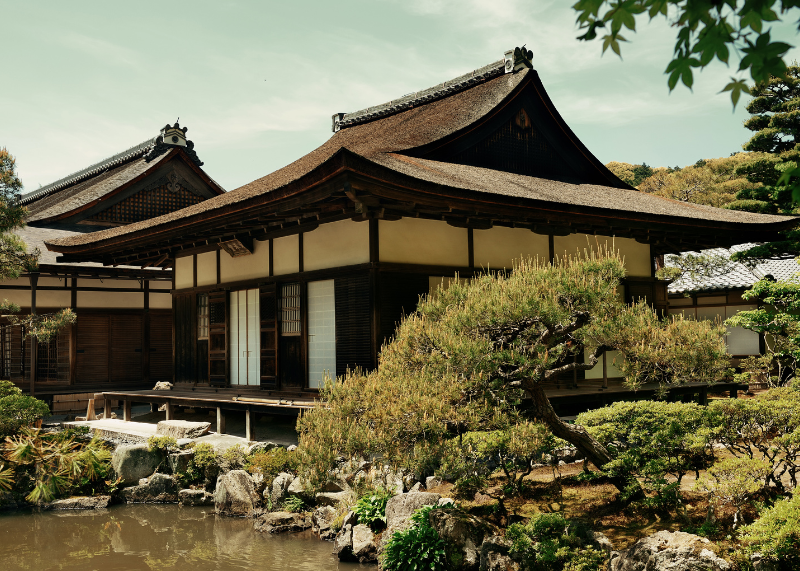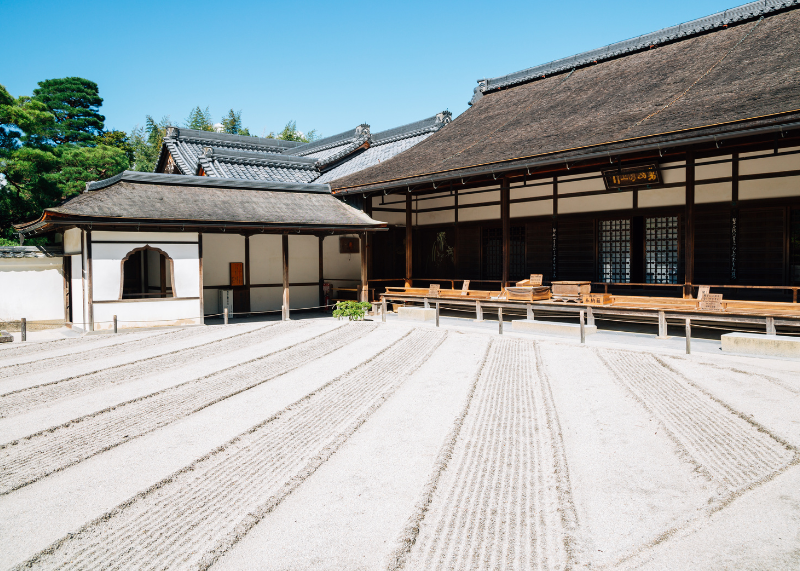Ginkaku-ji, also known as the Silver Pavilion, is a Zen temple in Kyoto that reflects the aesthetics of the Higashiyama culture. Despite its name, the pavilion is not covered in silver; instead, it is celebrated for its understated beauty and refined simplicity. Originally constructed in the 15th century as a retirement villa for Shogun Ashikaga Yoshimasa, it was later converted into a temple. The surrounding garden, a masterpiece of Japanese landscape design, features a sand garden known as the “Sea of Silver Sand” and a meticulously crafted moss garden.
The temple’s atmosphere is tranquil and contemplative, making it a perfect place to experience the essence of Japanese wabi-sabi aesthetics. Visitors can walk through the temple grounds, enjoying the serene environment and panoramic views of the city from the hillside. Ginkaku-ji is a testament to the enduring beauty of simplicity and natural harmony.



